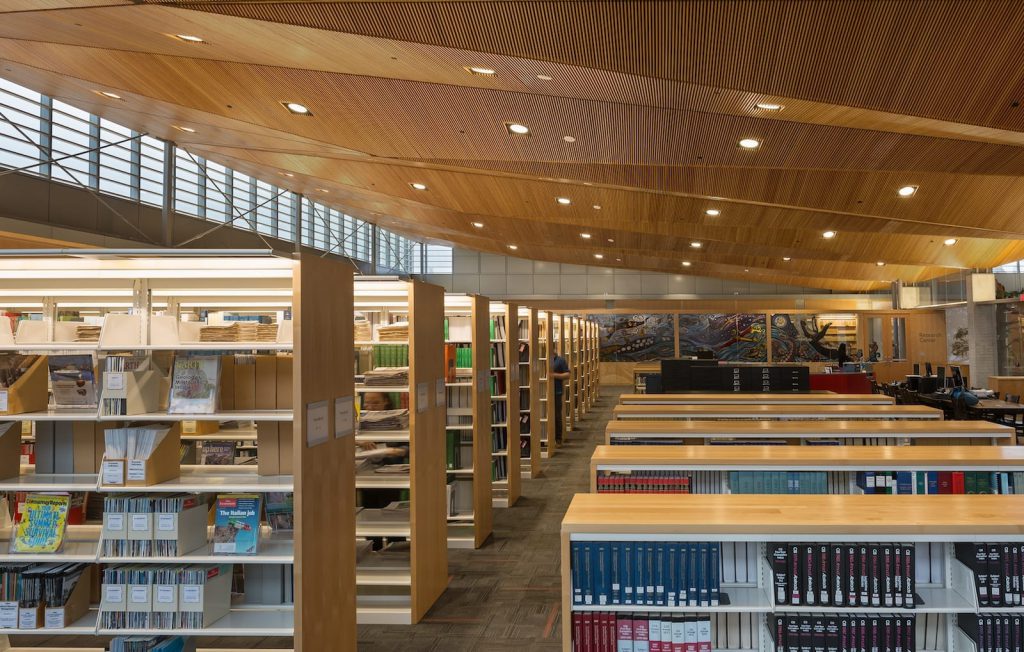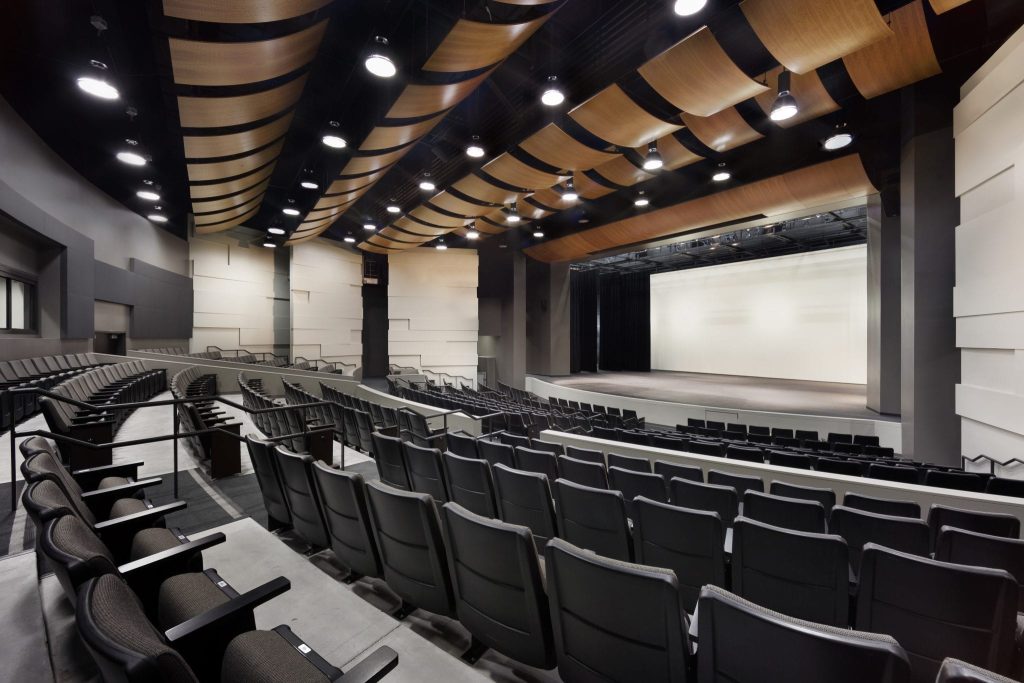Types of acoustic performance
In blending science and art for room acoustics, nothing compares to the expert advice of an acoustical engineer. Our goal is to provide wood surfaces that meet the designer’s intent while achieving the consultant’s recommendations.
Wood is acoustically warm and organic.
Consistent with good acoustics is employing the correct ceiling surface to tonally complement the sound performance of a space. The wrong material, such as metal, can impart a “tinny” or “metallic” signature to the sound. Plastic and fiberglass tend to be “drummy.” On the other hand, wood is acoustically warm and organic — one reason acoustic instruments are normally made from wood.
9Wood products offer two distinct types of acoustic treatment: Absorption or Diffusion.
Absorption
Wood surfaces are naturally reflective with an NRC (Noise Reduction Coefficient) of .05-.15. Absorption may be desirable in spaces where acoustic energy would have a negative impact on occupants, such as education and healthcare settings.
High levels of sound absorption (NRCs of .65–.90) can be economically achieved by means of strategically placing openings in the ceiling. This allows acoustic energy to pass through the ceiling into acoustically absorptive material hidden in the plenum.
Perforations, reveals, or grooves allow for a percentage of sound energy to pass through the wood ceiling and be absorbed by fiberglass acoustic backing material. In general, the thicker the fiberglass backing (3-6# density, 1″ to 6″ thick) the greater absorption will be achieved, especially at problematic lower (bass) frequencies.
9Wood 3000 Series Acoustics and 5000 Series Perf Tiles create tuned resonant sound absorbers. This means they provide peak absorption at certain problematic (typically mid-range) frequencies. These products can achieve NRC ratings of up to .90 NRC. Higher NRCs usually require supplemental fiberglass backing.
Because absorption is directly related to the percentage of open area in the ceiling, 9Wood Grille and Linear products can most easily achieve the highest NRC ratings.
Diffusion
Diffusion, the scattering of reflected sound, can be achieved by means of a wood wave tile (a curved surface) or scattered by means of irregular surfaces like wood grilles or cubes.
Diffusion can be highly desirable in spaces where sound needs to be more “live,” but problems with echo, ring and “slap” need to be avoided. Performance arts halls, houses of worship and lecture spaces are often served well by acoustic diffusion.
Whole-space performance
Often a space will need a careful combination of absorption and diffusion to function as it should. By offering a variety of beautiful wood products that provide either absorption or diffusion, we strive to leave as many design options available to the architect as possible.
9Wood has a number of products acoustically-tested in a third-party lab. Check out our Acoustic Tests to see the downloadable reports.


